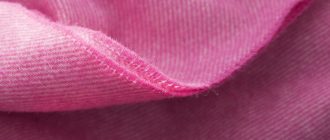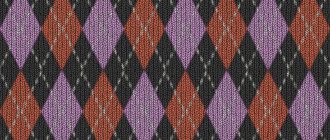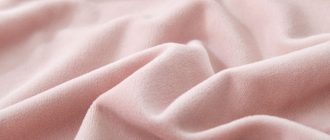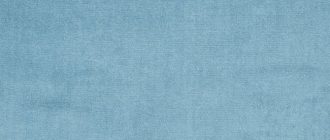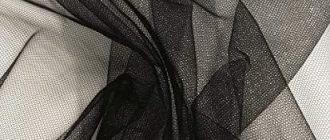What is Nylon Fabric?
You’ve probably heard of nylon fabric, but what is it and how is it used? In this article, we’ll explain what nylon fabric is, as well as the advantages and disadvantages of this material. Nylon is a versatile material that can be used for many different things.
However, it does have its disadvantages, as it tends to shrink or warp when exposed to moisture or high temperatures, and it lacks UV resistance, making it yellow and less durable when it comes to outdoor activities.
What is nylon fabric?
Nylon is an extremely versatile fabric and is one of the strongest textile fibers available. Its smooth, silk-like surface makes it a comfortable material to wear and has good resistance to water. This fabric is also easy to dye and is one of the most durable types of cloth available. It is widely used in clothing, backpacks, and book bags. Men’s clothing is often made of nylon, while women’s clothes can be fashioned from nylon-polyamide blends.

Nylon is very durable and is the best choice for outerwear, apparel, and even shoes and accessories. Because it is highly durable, it resists fading, stains, and wrinkling. It is also abrasion-resistant, making it perfect for activewear. It is the ideal material for backpacks, parachutes, and tennis strings. Because of its incredible strength-to-weight ratio, nylon is ideal for a variety of outdoor pursuits.
Although the United States was the primary producer of nylon until the early 1980s, other countries in the western hemisphere began to produce the material. In the 1980s, China became the largest producer, and many international corporations followed suit. Since then, other Asian countries like India have joined in the production of nylon fabric. During this time, the US produced less than half of its own nylon. This makes nylon fabric more affordable when mixed with other types of fabric.
What is nylon made of?
When you wear a jacket, jeans, or sweater, you might be wondering: What is nylon fabric made of? There are many benefits of nylon, but they are also associated with a host of negatives. Although nylon is incredibly strong and durable, it does not degrade quickly in landfills. It can sit there for centuries. Furthermore, nylon is highly energy-intensive and is derived from petroleum and coal, which contribute to the pollution of our air, water, and ecosystems. The process also releases harmful gasses, including nitrous oxide, which is 300 times more potent than carbon dioxide.
The different kinds of nylon are classified by their chemical name. Nylon is a polyamide, which consists of two monomers, one amine and one carboxylic acid. The nylon varieties include nylon 6,6 and nylon 66. The names of these different varieties indicate their properties. They are used for various applications in textiles, as well as in packaging. Nylon can be formed in different ways, and varies in color, durability, and strength.
Nylon is a polymer, meaning it consists of many similar units that are chemically bound together. It is similar to a chain, and is part of the polyamide family. DuPont was the first to commercially produce nylon, but its popularity was such that competitors were forced to come up with alternatives. Nylon comes in different fiber forms, with each having its own unique set of properties and uses. Kevlar, for example, is a bulletproof vest material. And Nomex is a fire-resistant textile.
The benefits of using nylon fabric
Nylon is a great fabric for sportswear because it is highly breathable and can handle summer humidity. It is also quick to dry and easy to wash. This is a great benefit, but it’s important to remember that it is not as breathable as Kevlar, which is often hard to find in your local fabric store. Here are some tips to make your sportswear look as good as possible. And if you want to keep it looking its best for years to come, look into nylon fabric.
Nylon has some downsides, though. It is expensive compared to other synthetic fibers, and the manufacturing process uses difficult chemicals. The downsides of nylon are that it does not degrade quickly and it doesn’t attract bacteria. It also pollutes the environment, so people who are concerned about plastic pollution may want to opt for natural fabrics. However, this doesn’t mean that nylon is without its benefits. There are many pros and cons to using nylon.
Because nylon is made from a man-made fiber, it requires thread that is also made from man-made materials. Cotton doesn’t have enough give and tends to break. Moreover, nylon doesn’t lend itself to complicated seams. For this reason, it is important to check your thread before sewing a large project with nylon. When sewing nylon, you should use a universal size 70/10 needle for sheer fabrics, and an 80/12 needle for medium-weight fabrics. You should also avoid using ballpoint needles, as they tend to snag easily.
The cons of using nylon fabric
While it’s easy to imagine the advantages of nylon textile, there are also some downsides to its use. The price of nylon can range from $4 to $8 a yard, depending on the quality and type of fabric you buy. While this synthetic fiber is more expensive than its natural fiber counterparts, it is significantly stronger and lasts longer. Also, nylon is slightly cheaper than wool and cotton. But there are many things you need to be aware of before using nylon fabric for your sewing projects.
The first con of nylon fabric is its tendency to fade with UV exposure and is not naturally UV resistant. While it’s possible to buy nylon fabrics that are treated with UV-resistance chemicals, this doesn’t guarantee they’ll never fade. In addition, nylon’s tendency to fade colors can lead to fabric degradation. When exposed to sunlight, nylon fibers will become brittle and will lose their luster.
The biggest upside of nylon is its low price. Originally made to replace silk, nylon has several advantages. It can be easily dyed and washed, and it’s also easy to clean. Nylon is cheaper than natural fabrics, which is why it’s often used in clothing. However, these advantages also come with a few drawbacks. Here are the cons of using nylon fabric for clothing:
History of nylon fabric
The development of nylon fabric dates back to the 1940s, when the DuPont Corporation patented the material. Its development remained largely local to the U.S. until the late twentieth century, when other developed nations became aware of its benefits. However, the United States continued to be the leading producer of nylon until the 1980s. Today, however, other nations are also participating in the production of nylon. The history of nylon fabric includes a wide variety of different products, including the many varieties of the material.
After nylon stockings first hit the market, the fabric was marketed to consumers as a practical patriotic choice. In fact, Americans bought 64 million pairs of nylon stockings in its first year on the market. The fabric quickly became a popular choice for all sorts of textiles, from clothing to carpets, machinery, and even medical supplies. Today, the material is used in a wide range of applications and has even been used on the moon!
The success of nylon was partially attributed to the marketing efforts of the DuPont company. The company began testing various kinds of cellulose-based fibers before the product became widely available. This led to the development of rayon, which was used in a variety of applications, including surgical implants, masks, and hoods. This important milestone led to a greater acceptance of nylon as a durable textile. However, despite its widespread use, the development of nylon fabric was plagued by many negative reactions.
How to care for and clean nylon fabric?
To maintain the appearance of nylon fabrics, you should learn how to wash and care for them correctly. Never wash nylon fabrics in hot water. Hot water can cause permanent damage. Use cool or moderate water. Add liquid detergent to the water and wash the item. Heavy-duty detergent works well to remove stains and dirt. Never use chlorine bleach. It can damage the fabric. Also, it can cause fading. Avoid putting your nylon clothing in a dryer.
Always follow the manufacturer’s instructions when washing nylon fabrics. Machine-washing nylon items can shorten their lifespan. Ultimately, the material will become pilled, and holes will form. Hand-washing nylon clothing can delay this degradation. By following the instructions provided by the manufacturer, you can preserve the color and shape of your nylon garments for years to come. In addition, always avoid using automatic drying machines. Whenever possible, dry the item naturally.
To wash nylon, use a gentle detergent and water. For a delicate material, such as nylon, a mesh bag is ideal. If you use a machine, wash the item on a gentle setting. Never use bleach or abrasive cleaners to clean nylon. You may want to use fabric softener instead of detergent. Then, hang it to dry. Once dry, apply a layer of fabric softener to the fabric.
FAQ
Main nylon fabric colors
- white
- black
- yellow
- red
- purple
- green
- blue
- grey
- pink
Main nylon fabric brands
- TELIO
- Lunarable
- ben textiles inc.
- Ambesonne
- Robert Kaufman
- eLuxurySupply
- APC Fabrics
- Sophia-Art
- SanVera17
- Michael Miller
- Cotton + Steel
- Spoonflower
- Fabric Merchants
